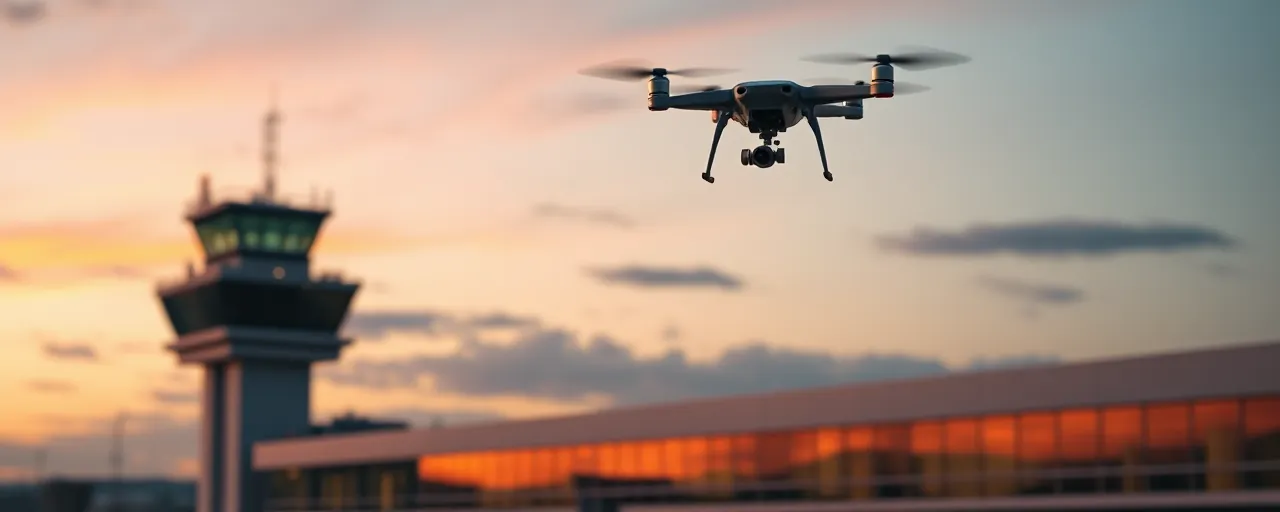A Sky Under Siege
Picture a bustling airport, planes gliding smoothly toward landing, passengers sipping coffee, unaware of a rogue drone buzzing just miles away. That’s no sci-fi flick. It’s the reality the Federal Aviation Administration is tackling head-on with its latest drone-detection tests in Cape May, New Jersey, set for April 14-25. The stakes? Nothing less than the safety of our skies, the security of our infrastructure, and the integrity of an aviation system that keeps America moving. These tests aren’t just experiments; they’re a clarion call for ironclad control over our airspace in an age when drones are no longer toys but potential weapons of chaos.
The FAA’s move to test drone-detection tech over the waters near Cape May Ferry Terminal is a bold step, one that signals a refusal to let reckless operators hold our skies hostage. With over 100 commercial drones and large UAS in play, alongside local first responders, the agency is sending a message: unauthorized drones have no place near critical infrastructure. This isn’t about stifling innovation. It’s about protecting lives, livelihoods, and the economic engine of aviation from those who flout the rules for a cheap thrill or worse.
The Growing Drone Menace
Let’s face facts. Drones are everywhere, and not all of them are flown by hobbyists snapping scenic photos. Between January and March 2024, the FAA logged 200 drone sightings near airports, six of which forced pilots to swerve to avoid collisions. That’s not a statistic; it’s a near-catastrophe. These incidents expose a glaring vulnerability in our airspace, where a single misstep could bring down a passenger plane or disrupt supply chains that keep grocery shelves stocked. The FAA’s data shows over 2,000 such sightings since 2021, proof that the problem isn’t going away on its own.
Then there’s the tech itself. Modern drones can jam GPS signals, throwing off aircraft navigation systems in ways that make pilots sweat. A 2024 crash tied to GNSS disruptions in Azerbaijan showed just how deadly these interference tactics can be. Yet some argue we should loosen restrictions, let drones fly freer to spur innovation. That’s a fantasy. Without tight control, we’re gambling with lives and inviting chaos into a system that demands precision. The FAA’s tests in Cape May, Alaska, and beyond are building a shield against this threat, using AI-powered tracking and radar to spot drones before they become disasters.
Rules Without Teeth Won’t Cut It
The FAA isn’t starting from scratch. Its Remote ID rules, requiring drones to broadcast their locations, and Part 108 frameworks for advanced operations are steps forward. Enforcement’s another story. From October 2022 to June 2024, the agency slapped $341,413 in fines on rogue operators. Impressive, until you realize violations keep climbing. Why? Because too many drone users, from backyard hobbyists to shady actors, either don’t know the rules or don’t care. The FAA’s Drone Safety Day, slated for April 26, 2025, aims to educate, but pamphlets and PSAs won’t stop those who see airspace as their personal playground.
Skeptics might claim heavy-handed enforcement kills the drone industry’s potential. They’re missing the point. A free-for-all sky benefits no one, not innovators, not businesses, not the public. The FAA’s push for detection tech, backed by 46 recommendations from its 2023 advisory committee, shows a commitment to balance: foster growth, but not at the expense of safety. Cape May’s tests are proof we can integrate drones responsibly, but only if we prioritize accountability over excuses.
A Blueprint for a Safer Tomorrow
Cape May is just the beginning. The FAA’s plans for tests in New Mexico, North Dakota, and Mississippi signal a nationwide resolve to lock down our airspace. This isn’t about bureaucracy flexing muscle; it’s about safeguarding an aviation system that underpins our economy. The global drone detection market, pegged to hit $2.33 billion by 2029, reflects a world waking up to the same reality: unchecked drones are a liability we can’t afford. Technologies like RF sensors and optical systems aren’t just gadgets; they’re the future of a secure sky.
We’ve got a choice. Double down on control, or cross our fingers and hope rogue drones don’t crash the next flight. The FAA’s work in Cape May points to the right path: proactive, unapologetic defense of our airspace. It’s not perfect, and it’ll take time, but it’s a fight worth waging. Because when it comes to the safety of our skies, there’s no room for half-measures. We need rules with teeth, tech that delivers, and a commitment to keeping America’s airspace the envy of the world.
